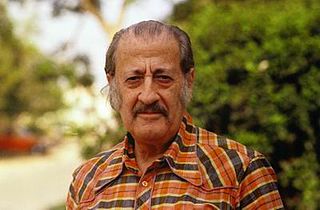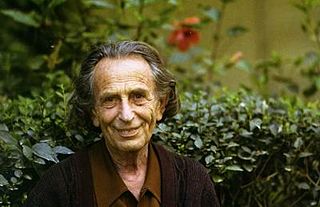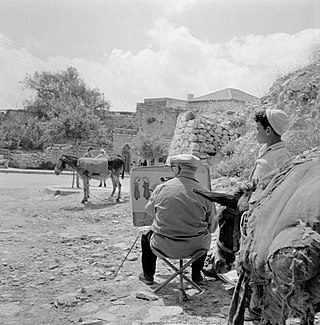
The School of Paris refers to the French and émigré artists who worked in Paris in the first half of the 20th century.

Shimshon Holzman was an Israeli landscape and figurative painter. He is known worldwide for his water color paintings.

Yitzhak Frenkel, also known as Isaac Frenkel or Alexandre Frenel, was an Israeli painter, sculptor and teacher. He was one of the leading Jewish artists of the l’École de Paris and its chief practitioner in Israel, gaining international recognition during his lifetime.
Joseph Kossonogi was an Israeli painter.

Lea Nikel was an Israeli abstract artist.
Eliahu Gat was an Israeli landscape painter.

Moshe Castel was an Israeli painter.

Avigdor Stematsky (1908–1989) was a Russian Empire-born Israeli painter. He is considered one of the pioneers of Israeli abstract art.

Yehezkel Streichman was an Israeli painter. He is considered a pioneer of Israeli modernist painting. Among the awards that he won were the Dizengoff Prize and the Israel Prize.

Arie Aroch was an Israeli painter and diplomat born in Kharkiv, now Ukraine and then part of the Russian Empire. Aroch's work was a mixture of Pop Art and abstract art, along with elements from his biography. In addition, many scholars of the history of Israeli art have pointed out Aroch's pioneering use of Jewish themes in his works. His painting style included unstructured scribbling and drawing, and it influenced a broad range of artists, including Raffi Lavie, Aviva Uri, etc. Sarah Breitberg Semel, in her article, Agrippa versus Nimrod (1988), suggested Aroch as a model for the new Israeli concept of design in art, and suggested his painting, Agrippas Street was the representative of Jewish identity. In 1971, Aroch was awarded the Israel Prize in Painting for his work.

Visual arts in Israel or Israeli art refers to visual art or plastic art created by Israeli artists or Jewish painters first in the region of Palestine, from the later part of the 19th century until 1948 and subsequently in Israel and the occupied Palestinian territories by Israeli artists. Visual art in Israel encompasses a wide spectrum of techniques, styles and themes reflecting a dialogue with Jewish art throughout the ages and attempts to formulate a national identity.
The “Tower of David Period” is the nickname which describes Israeli art during the 1920s. The nickname was coined as a result of the exhibition that took place in the Tower of David during that period. Instead of one artistic direction, this period was characterized by artistic works of conflicting styles, reflecting the worldview of the artists with regard to the social, political, and artistic reality within the Land of Israel and outside of it. Alongside the art created at “Bezalel”, which was characterized by decorative motifs and the influence of ars nova, the young Land-of-Israel artists produced works of art that reflected a variety of modernist influences.
Ofakim Hadashim is an art movement started in Tel Aviv in 1942.

Shmuel Raayoni was an Israeli painter, member of New Horizons, teacher and educator and founding member of Ein-Hod Artist Village.

Ephraim Lifschitz is an Israeli painter, born 1909, Stolin, Poland and died 2004.

Mordechai Levanon was an Israeli painter. He was one of the foremost Israeli landscape painters. He was the winner of the Dizengoff prize in 1940 and 1961. He was enchanted by Erez Israel's light, and the cities of Safed and Jerusalem; all of which feature heavily in his paintings.

The Artists' Quarter in Safed, also known as the Artists' Colony; was founded with the liberation of Safed, in the war of independence (1948-49). With the encouragement of the Safed municipality, a group of artists began to restore ruins in the Mamluk neighborhood of Harat al-Wata, on the border of the historic Jewish quarter, to build galleries and open exhibitions. The first artists to settle in Safed however arrived several years beforehand. The first to discover Safed's artistic aura was Isaac Frenkel Frenel in 1920 and following him Moshe Castel and Mordechai Levanon in the 1930s.

Jacob Pereman was a Zionist activist, poet, thinker, biblical scholar, bibliographer, an art and book collector, expert and pioneer in the research of Jewish art and in its introduction to the general public in the Land of Israel.
Aharon Avni (Kaminkovitz) was an Israeli painter, born in Russia, a member of the 'Massad' group, founder of the 'Avni Institute,' and one of the founders of the HaMidrasha For the arts.

The art of the Jewish people encompasses a diverse range of creative endeavors, spanning from ancient Jewish art to contemporary Israeli art. This rich tradition includes visual plastic arts, sculpture, painting, and more, all influenced by Jewish culture, history, and religious beliefs.
















